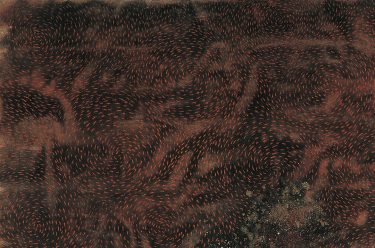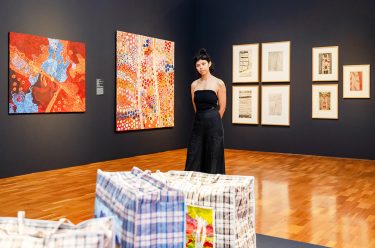QAGOMA has acquired seven Papunya boards with funds from the Australian Government’s National Cultural Heritage Account, painted in the first critical years of Australia’s contemporary Aboriginal art movement.
The Gallery is dedicated to showcasing historical and contemporary Indigenous Australian art and reflecting the rich diversity of Aboriginal and Torres Strait Islander cultures. This acquisition guarantees this important set of paintings are retained in Australia.
Purchased from the Ian Rogers Collection in Melbourne, the seven boards represent the work of the founding artists of the Papunya Tula Art Movement in the Northern Territory, which began in 1971.
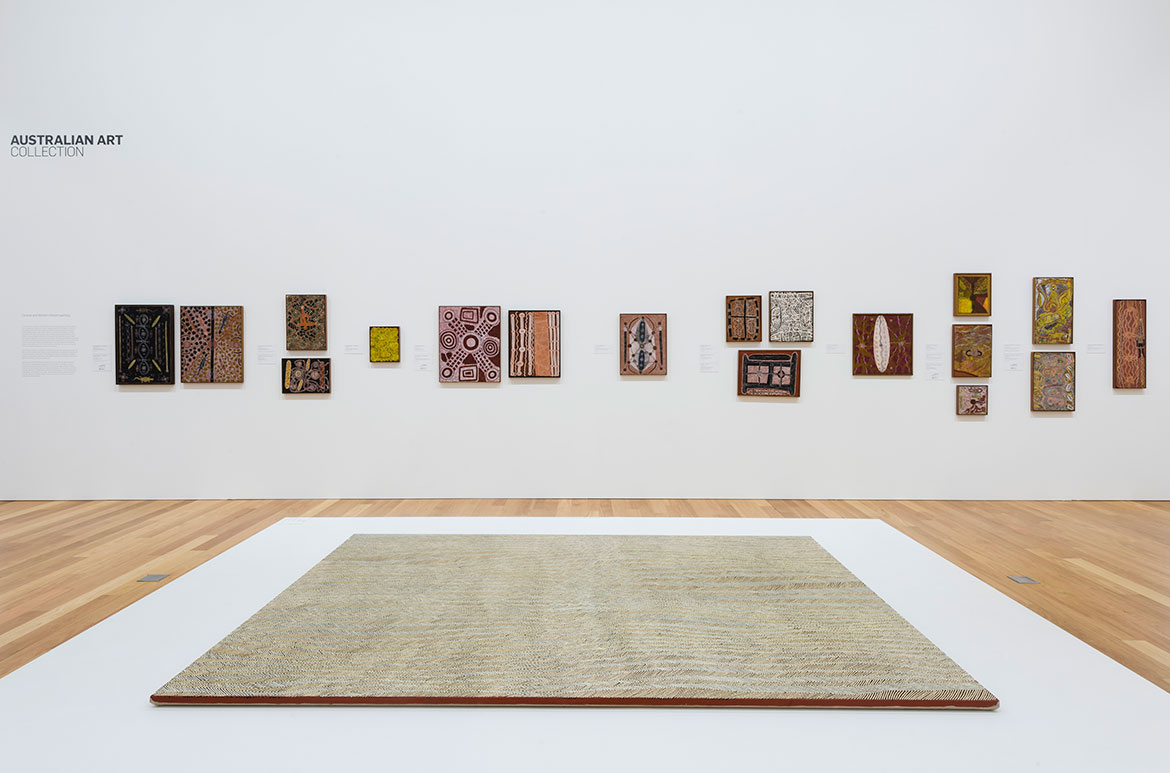
The seven Papunya board paintings are:
- Johnny Warangula Tjupurrula Women’s ceremony in a cave 1971 (illustrated)
- Kaapa Mbitjana Tjampitjinpa Untitled (Goanna Story) 1971 (featured in video)
- Mick Namarari Tjapaltjarri ‘Tingari’ Cycle Dreaming Journey 1972 (featured in video)
- Tim Leura Tjapaltjarri Untitled (Euro Dreaming Ceremony) 1972 (illustrated)
- Uta Uta Tjangala Tjitiji Kutjarra at Yawarrankunya (Two Boys Dreaming) 1972
- Tim Leura Tjapaltjarri Bushfire Corroboree 1973 (featured in video)
- Charlie Tarawa (Wartuma) Tjungurrayi The Importance of Fire 1973 (illustrated)
Johnny Warangula Tjupurrula ‘Women’s ceremony in a cave’ 1971
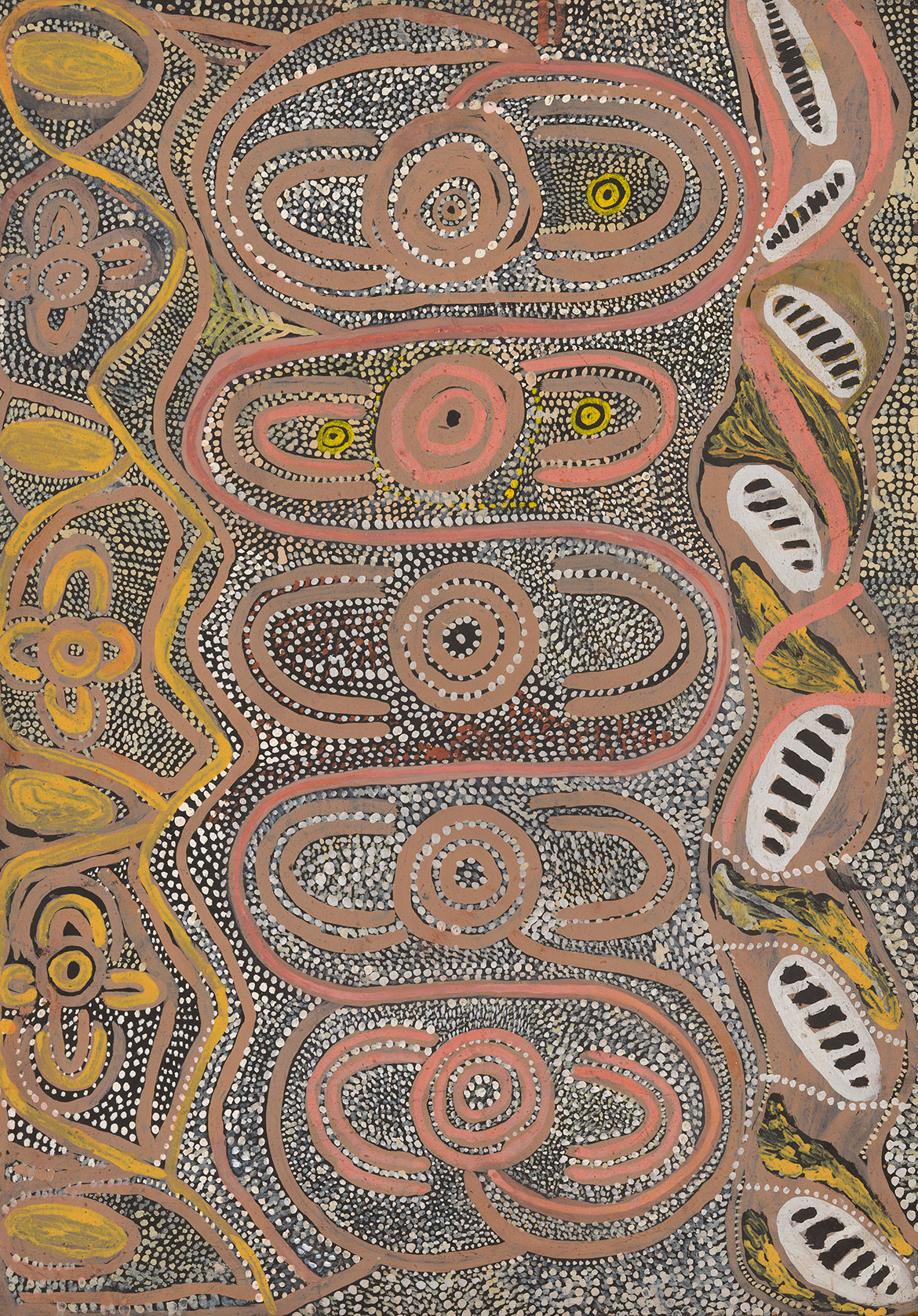
Tim Leura Tjapaltjarri ‘Untitled (Euro Dreaming Ceremony)’ 1972
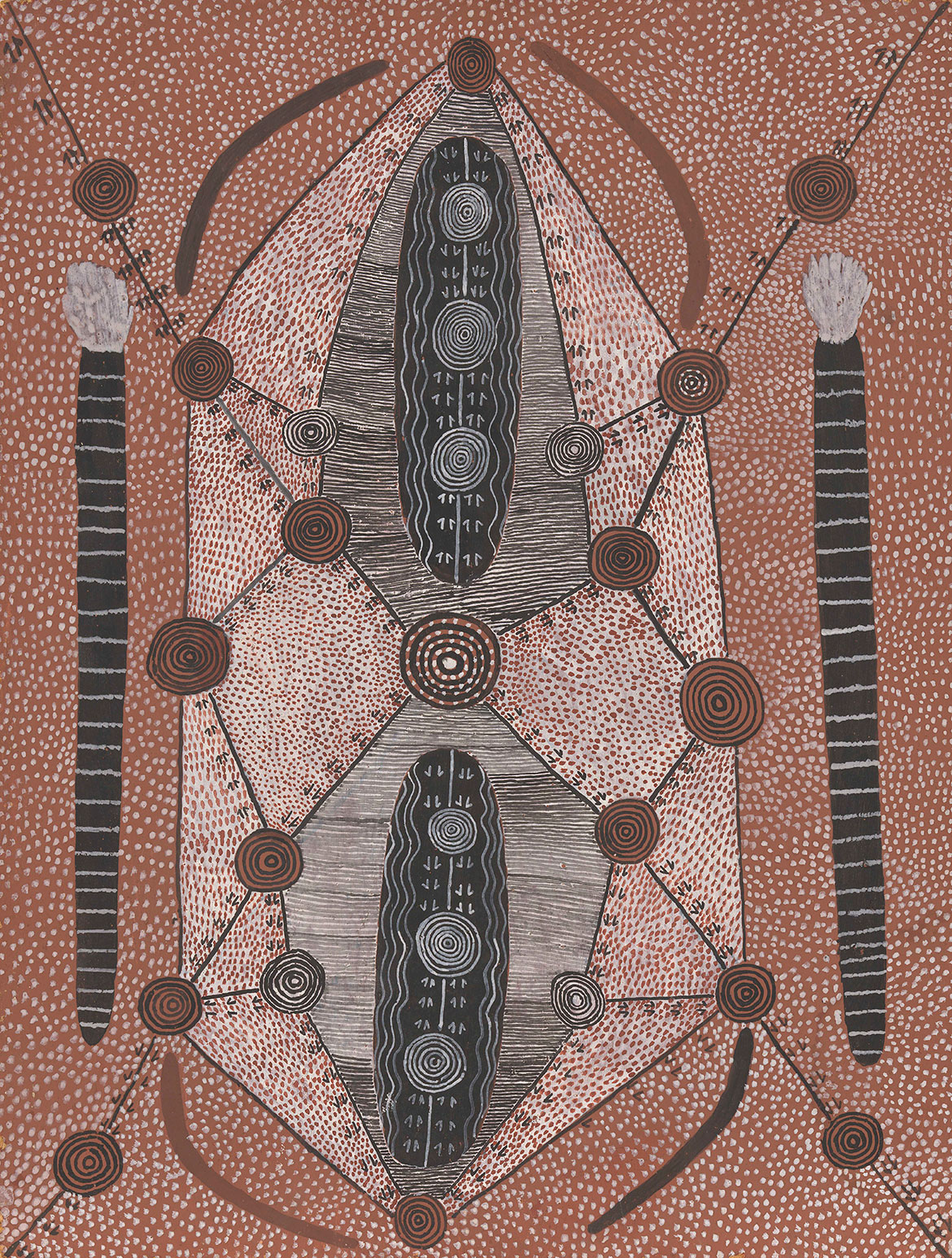
Charlie Tarawa (Wartuma) Tjungurrayi ‘The importance of fire’ 1973
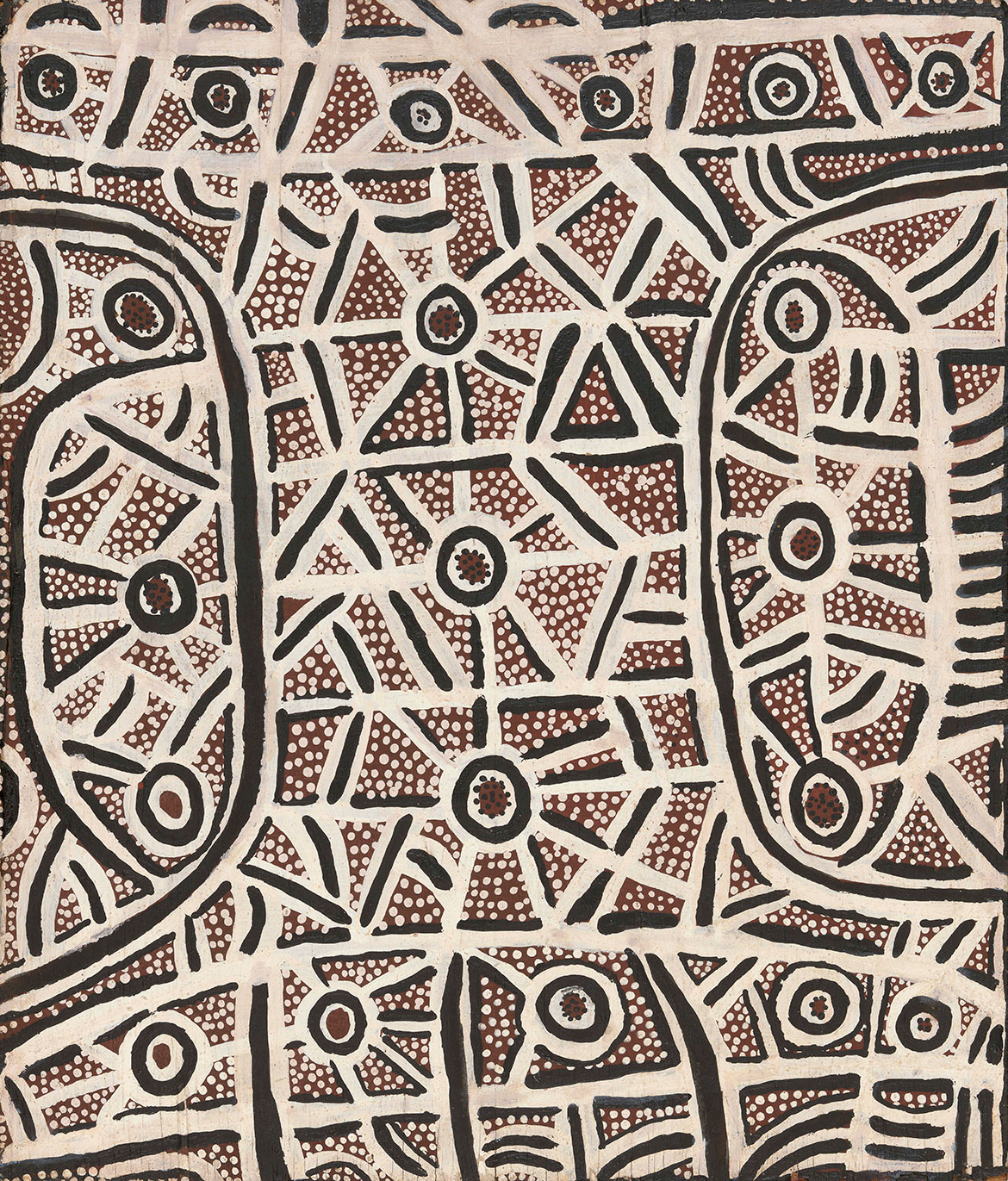
The acquisition of the Papunya Boards for QAGOMA is supported through the Australian Government’s National Cultural Heritage Account.
The National Cultural Heritage Account helps keep items of cultural significance in Australia so they can be preserved and made available to the public.
Acknowledgment of Country
The Queensland Art Gallery | Gallery of Modern Art (QAGOMA) acknowledges the Traditional Owners of the land on which the Gallery stands in Brisbane. We pay respect to Aboriginal and Torres Strait Islander Elders past and present and, in the spirit of reconciliation, acknowledge the immense creative contribution First Australians make to the art and culture of this country. It is customary in many Indigenous communities not to mention the name or reproduce photographs of the deceased. All such mentions and photographs are with permission, however, care and discretion should be exercised.
Featured image detail: Johnny Warangula Tjupurrula Women’s ceremony in a cave 1971
#QAGOMA

